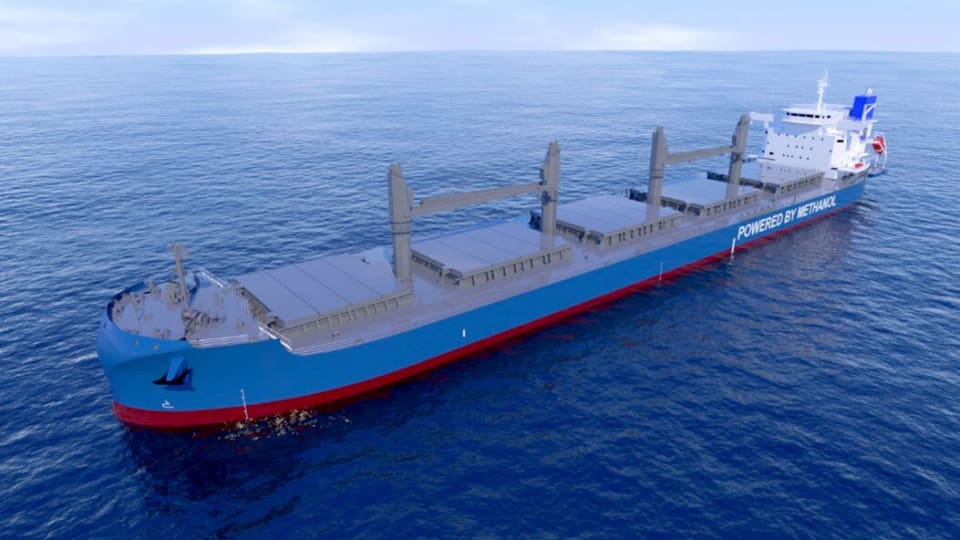The vessel is designed to use e-methanol produced primarily by synthesising recovered CO2 and hydrogen produced using renewable energy sources, and bio-methanol derived from biogas.
The use of methanol derived from non-fossil raw materials significantly reduces GHG emissions, compared to heavy oil-fueled and similar-size conventional vessels.
The vessel’s design maximises cargo space while ensuring sufficient methanol tank capacity set to allow the required navigational distance assuming various routes, at the same time maximising cargo space.
The vessel is expected to serve mainly in the transport of biomass fuels from the east coast of North America to Europe and the UK and within the Pacific region, as well as grain from the east coast of South America and the US Gulf Coast to Europe and the Far East.
MOL has established the “MOL Group Environmental Vision 2.2” and set the goal of achieving net zero greenhouse gas (GHG) emissions by 2050.
One of the key strategies to achieve this goal includes the “adoption of clean alternative fuels,” and MOL Group aims to have 90 LNG/methanol-fueled vessels in service by 2030.
In addition, with growing worldwide interest in methanol fuel as a promising clean energy source, it will promote its initiatives to secure the necessary capacity, not only in terms of fleet planning of methanol dual fuel vessels, but also in procurement of low and decarbonised methanol fuel.
